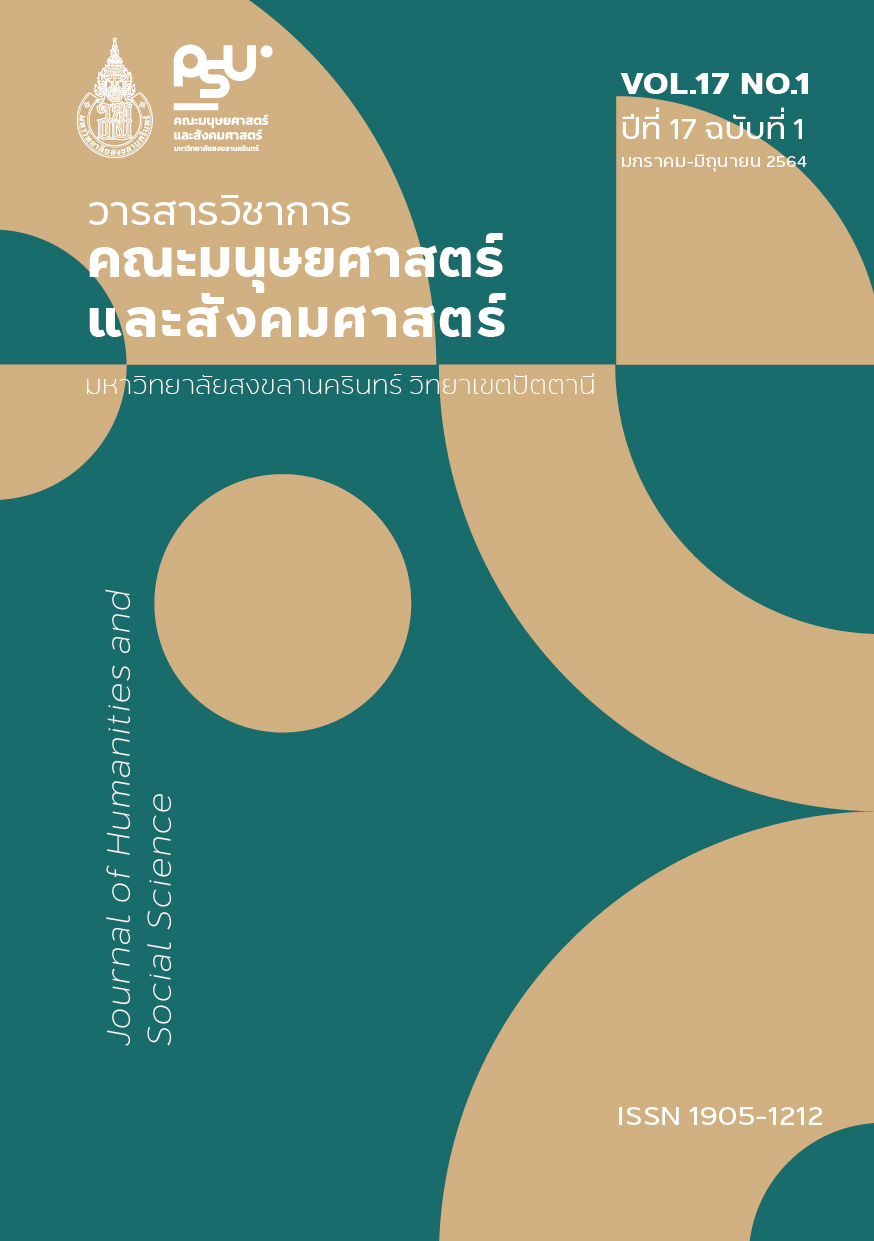Evolution and knowledge surveying of geography’s academic in twenty-first Century
Keywords:
Physical Geography, Geo-Informatics, Meta-analysis, Effected size, Network analysisAbstract
The purpose of this paper is to study the knowledge and academic progress of geography in the early of 21st century in the field of physical geography and Geo-Informatics. Observation the related research studies and articles in Thailand and abroad. Using method of studying content and classification, Meta-analysis, effect-size, and academic relational network.
The results of the meta-analysis study and effect size in physical geography. Found that the field of Environmental geography, Meteorology, Coastal geography, Hydrology and Quaternary Sciences. It has a prominent role in Europe and America. The Geo-Informatics found that the field of Spatial analysis, Global position system, Remote sensing, and Web mapping. It plays a prominent role in Europe and America as well. The academic relational network found the axis of Environmental geography, Hydro-geography, and Coastal geography was in the field of Physical geography. The axis of Global position systems and remote sensing are in the Geo-Informatics. The research in Thailand was focuses on applied studies of Geo-Informatics on environmental change, land use and natural disasters. The overseas was in-depth research and progress in each field such as Environmental change studies, Behavior and Quantity, Physical and Geopolitics, Ecology and Evolution, Biology and Social interaction in Physical geography. The study and research in Spatiotemporal, Positioning system and Mapping, Biogeography and Morphology, Information system, Early warning predicting and Behavior modeling, Digital geography in the Geo-Informatics.
In summary, both fields are important in the geography world and related sciences in terms of fundamental sciences, spatial application, and prediction.
References
กัตติกา ธนะขว้าง. (2553). การวิเคราะห์อภิมาน : แนวคิดและการประยุกต์ใช้ในการวิจัยทางการพยาบาล. วารสารสภาการพยาบาล, 25(4), 10-22.
นงลักษณ์ วิรัชชัย. (2542). การวิเคราะห์อภิมาน. กรุงเทพมหานคร: นิชินแอดเวอร์ไทซิ่งกรุ๊ป.
อเสข ขันธวิชัย. (2559). สร้างความได้เปรียบทางการแข่งขันในยุค Digital Business Transformation ด้วยการวิเคราะห์เครือข่ายสังคม (Social Network Analysis). ค้นจาก https://www.appdisqus.com/social-network-analysis/
Abrams K.R., Jones D.R., Sheldon T.A., and Sutton A.J. (2002). Methods for meta-analysis in medical research. John Wiley & Sons Ltd.
Cooperative Holocene Mapping Project. (1988). Climate changes of the last 18,000 years: Observations and model simulations. Madison, WI, United States: University of Wisconsin Madison.
Demeritt D. (2008). Dictionaries, disciplines and the future of geography. Geoforum, 39(6) 1811-1813.
Ferguson, R. (2003). Publication practices in physical and human geography: a comment on Nigel Thrift’s “The future of geography”. Geoforum, 34(1), 9-11.
Frazier, J.W. (2015). Applied geography: a US perspective. International Encyclopedia of the Social & Behavioral Sciences, 845-849.
Greenland, S., and Rourke, K. O. (2008). Meta-analysis: modern epidemiology. Lippincott Williams and Wilkins.
Greson, N. (2003). Disciplinary games and the need for a post-disciplinary practice: responses to Nigel Thrift’s “The future of geography”. Geoforum, 34(1), 5-7.
Hedges, L.V., Higgins, J.P.T., Rothstein, H.R., & Borenstein, M. (2009). Introduction to meta-analysis. Chichester, WestSussex: John Wiley & Sons.
Hunter, J.E., & Schmidt, F.L. (1991). Method of meta-analysis. NewburyPark: Sage.
Mayhew, S. (2015). Physical geography. Dictionary of Geography. Oxford University Press.
McGaw, B., Smith, M.L., & Glass, G.V. (1981). Meta-analysis in social research. Sage Publications.
Microsoft. (2008). NodeXL: network overview, discovery and exploration in excel. Retrieved from https://www.microsoft.com/en-us/research/project/nodexl-network-overview-discovery-and-exploration-in-excel/
Moore, N. (2002). A model of social information need. Journal of Information Science. First Published August 1, doi.org/10.1177/016555150202800404
Morgan, G.A., Harmon, R.J., & Meta Gliner, J.A. (2003). Meta-analysis: formulation and interpretation. Journal of the American Academy of Child and Adolescent Psychiatry. 42(11), 1376-9.
Mullen, B. (1989). Advance basic meta-analysis. Hillsdale, New Jersey: Lawrence Erlbaum Associates.
Nodexl. (2018). Leverage the power of social network analysis for marketing & research. Retrieved from https://nodexl.com/
Olkin, I., & Hedges, L.V. (1985). Statistical methods for meta-analysis. Orlando, Florida: Academic Press.
Rediscovering Geography Committee. (2021). Rediscovering geography: new relevance for science and society. Washington, D.C., USA: National Academy Press.
Roorbach, G.B. (1914).The trend of modern geography. Bulletin of the American Geographical Society, 46(11), 801-816.
Rosenthal, R. (1991). Meta-analytic procedures for social research. Newbury Park: Sage Publications.
Ryu, J.H., Jung, H.S., Lee, S., & Cui, T. (2019). Advances in remote sensing and geoscience information systems of coastal environments. Journal of Coastal Research, v-xi.
Sameer Kumar and Kevin B. Moore. (2002). The evolution of global positioning system (GPS) technology. Journal of Science Education and Technology, 11, 59-80.
Slavin, R.E. (1986). Best-evidence synthesis: an alternative to meta-analytic and traditional reviews. Educational Reserch and Reviews, 15, 5-11.
smrfoundation. (2016). Nodexlgraphgallery. Retrieved from https://www.nodexlgraphgallery.org/Pages/Registration.aspx
Thrift, N. (2002). The future of geography. Geoforum, 33(3), 291-298.
Turner, B.L. (2002). Response to Thrift's “The future of geography". Geoforum, 33(4), 427-429.
Downloads
Published
How to Cite
Issue
Section
License
Copyright (c) 2021 Journal of Humanities and Social Sciences

This work is licensed under a Creative Commons Attribution-NonCommercial-NoDerivatives 4.0 International License.
บทความนี้ได้รับการตีพิมพ์เป็นของวารสารวิชาการคณะมนุษยศาสตร์และสังคมศาสตร์ คณะมนุษยศาสตร์และสังคมศาสตร์ มหาวิทยาลัยสงขลานครินทร์ วิทยาเขตปัตตานี






